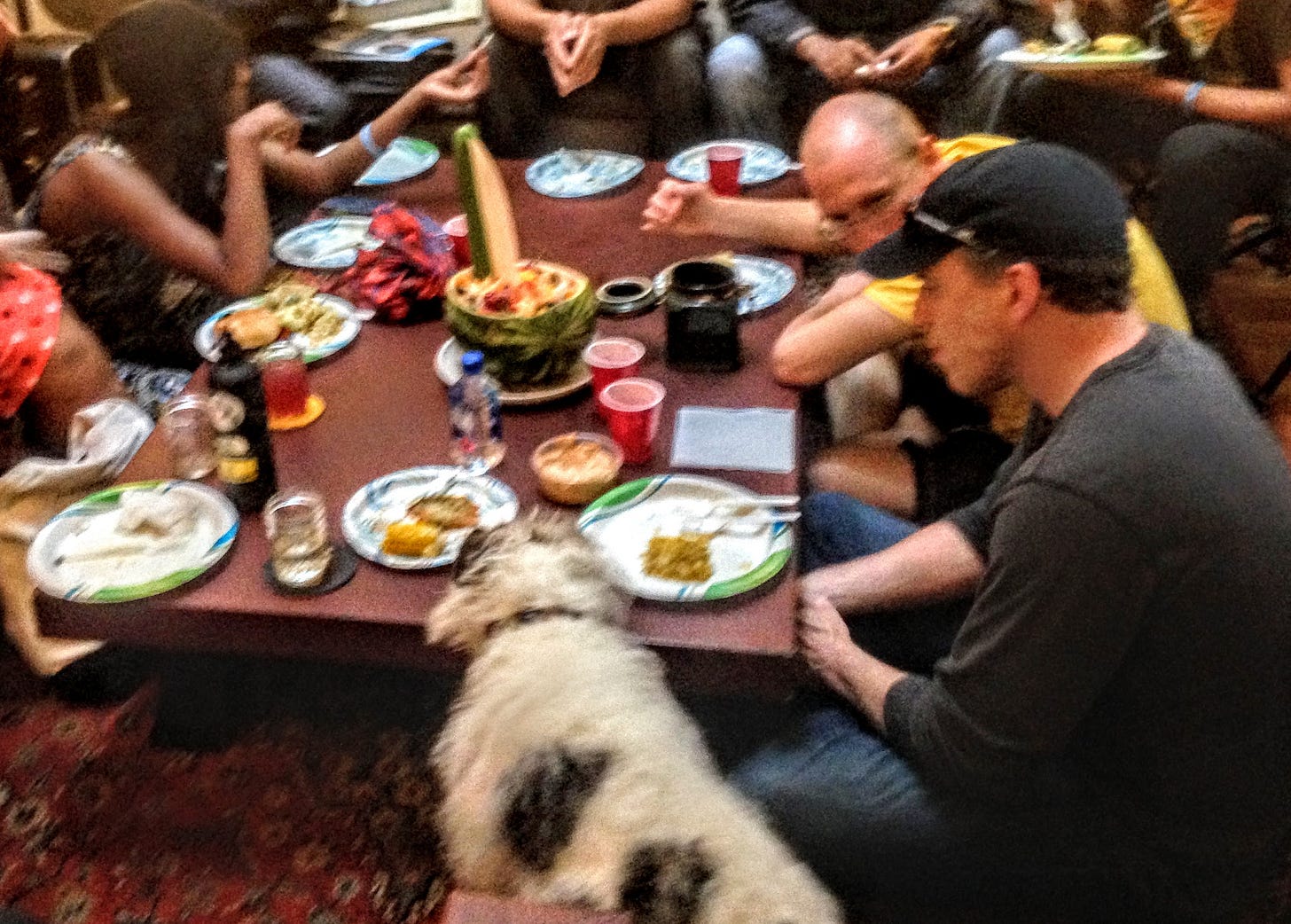Buddy was good at visualizing at least one aspect of his future . . . and planning what he might do about it.
My climate view these days
The whole point of a climate visualization is to have a landscape that’s useful, first for clearly seeing climate events and measurements that will affect us, and second for keeping us motivated to take action. After all, global warming will probably mess with our families and communities more than inflation, pandemics, even war.
Many of us think we have a useful view of climate change if we read the news every day. But just look at one day’s climate stories! It’s good there are so many compared with a few years ago! But the avalanche of news from environmental organizations and the news media are all over the map—locations, types of risk, time periods. (Yes, ClimateDog stories contribute to this cacophony.) We may not notice, but it’s become easy to lose perspective in this morass of events, statistics, developments, concerns, research, opinions and such.
With so many facets of our climate future to look at, I think each of us needs to concentrate our vision on something narrow—and actionable. These days, my own personal futurescape is signposted with the expected effects of last August's huge climate initiative, the Inflation Reduction Act (IRA). Yeah, it’s great to have that powerful law on the books, but we need to make use of it, quickly!
How are the hundreds of billions of dollars being spent? Can we see those funds starting to curb emissions growth and to build the climate protections they’re predicted to create? How are the IRA subsidies and tax rebates increasing the sales of household and community solar installations in my area?
It’s a conscious choice for me to monitor and measure climate change this way. It suits my viewpoint and inclinations. Since long before I wrote my book I’ve wanted to
look primarily at my home state and county (in a low-lying coastal area these days),
look at very local mitigation and adaptation efforts (e.g. facing up to flooding dangers and how to tackle the protection of vulnerable fields & properties),
watch attitude changes at the family and community level (e.g. fewer conflicts at town meetings, more working groups being formed),
gauge things in dollars and kilowatts, not tons of CO2,
believe that not much can happen without strong government action like the IRA, and
look for hands-on opportunities to help decelerate climate change.
This visualization, although narrow, has helped me find and join an organization around here persuading families to switch to solar energy. Called the Skagit Valley Clean Energy Cooperative, it operates at the hyper-local level encouraging community arrays and individual household installations. There are many varieties of sustainability groups in thousands of counties across America. Most are too small to advertise their presence, but they can be found with determined searching.
Yes, I still read each day’s climate news but, for the time being, I’ve chosen my futurescape, and I try to leave most of that other stuff in my peripheral vision. And of course I still support my favorite national and international organizations, my state and Washington lawmakers, and other groups working more diffusely to deal with greenhouse emissions.
Others’ climatescapes
This futurescape works for me. It fits ClimateDog’s recommendations last week that each of us have a scenario that brings into focus factors that impact us and opportunities to personally act to protect our family and neighborhood.
Other people may more clearly visualize developments in Washington and state capital politics, threats and improvements to health, climate depression among children, or lots of other viewpoints. All these climatescapes have indicators to watch and, most importantly, real hands-on ways to make a difference. Such opportunities might not be obvious if we choose to focus on broader, more distant topics like climate treaties, capturing and storing emissions, climate migration, or species extinctions.
The important thing is to see the climate future in a way that draws our thoughts in that direction AND guides us to actually do something!
LEARN, THINK, ACT
In the climate crisis, it’s difficult for most of us to make the switch from spectator to effective combatant. But there are hundreds of unseen organizations across the country, like the Skagit Valley Clean Energy Coop in my tiny town. Through them we can make that switch, joining activities to help our communities reduce fossil fuel use and build local defenses against climate damage. To find groups near us, we can search Twitter using the hashtags #climateaction, #sustainability, #renewableenergy, and #communityresilience plus our location. Or do the same thing on Facebook and Instagram.
We can also check if there’s a chapter of 350.org or the Sierra Club near us. Some of these local groups are surprisingly active, each in its own way.
Searching for, say, “climate action Des Moines County” and then clicking the News button, gives lots more information about local activities and groups.
Next week: Despite the growth of short-term optimism, reasons for long-term pessimism are growing too.




Thanks Climatedog!
Very inspiring. Like the SVCEC connection. Will definitely share!